As Fabulous Realms has today reached the milestone of one hundred posts, I thought it would be the perfect opportunity to do something that I’ve been planning to do for some time. Long-time followers of this blog will be aware that I regularly put the spotlight on a ‘mythic archetype’ or fantasy genre, draw out its identifying features and provide what are in my view some of the finest examples of the form. Along the right hand side of this blog site, you’ll see that I’ve grouped my posts into general categories, many of which are self-explanatory but some of which may require a little more in the way of explanation for the casual reader or non-fantasy fan. What do I mean when I talk about ‘Sword & Sorcery’, for instance, and is this the same thing as ‘Epic’ or ‘High’ fantasy? What’s the difference between ‘Urban fantasy’ and ‘Contemporary fantasy’, and where does ‘Paranormal Romance’ fit in? Is ‘Dark fantasy’ the same as horror and is ‘Science fantasy’ the same as science fiction? These questions may or may not have exercised you at one time or another but I thought that it might, all the same, be interesting to explore the – not quite one hundred – ‘Fabulous Realms’ of fantasy fiction in search of answers.
Below, what I’ve tried to do is split up the fantasy genre, classify its sub-genres and provide some of the best examples of each. Part of the difficulty with doing this is that, of course, many books (and authors) can be filed under multiple genres, but I hope what I’ve done makes some sort of sense nevertheless. So, without further ado, this is it, my almost all-encompassing fantasy family tree:
‘Pure’ Fantasy
This is my own umbrella term for a number of related fantasy sub-genres, including High, Epic, Arthurian and Heroic fantasy, as well as Sword & Sorcery. Epic fantasy is, in a nutshell, any book or set of books where a bunch of people try to save the world, sometimes several times over. Notable for its intricate plots, Epic fantasy is also distinguished by having large casts of characters, a threat to the world and an earth-shattering war of some kind. It is also usually set exclusively in a secondary world (i.e. not our own world and time) and the over-arching plot is more important than the plots of individual novels. At its very best, Epic fantasy creates vivid worlds of heroism and sacrifice. At its worst, its primary characteristic is enormously thick books, where ideas run out long before the pages. The greatest initial influence on Epic fantasy was of course J R R Tolkien and the Professor’s hand can also be glimpsed clearly in the formation of the related sub-genre of High fantasy. Featuring similarly labyrinthine plots and lengthy lists of characters, High fantasy is distinguished from Epic fantasy mainly by the absence of shades of grey: heroes are typically whiter than white while villains are nothing more than ciphers. Absence of moral ambiguity is made up for by complex historical, cultural and magical detail – a High fantasy novel almost always features a glossary, appendix, index or some combination of all three.
The flipside of Epic and High fantasy is Heroic fantasy, a sub-genre which does what it says on the tin in focusing on heroes. Here we’re not just talking about heroes in the sense of the main protagonists in novels, we’re talking about larger-than-life characters with magic swords, world-changing destinies and, often, some sort of distinguishing physical characteristic – think Michael Moorcock’s Elric of Melnibone, Robert E Howard’s Conan the Barbarian or David Gemmell’s Druss the Legend. Heroic fantasy is heavily influenced by folklore and mythology, which itself featured ‘hero’ characters like King Arthur, Finn MacCool and Gilgamesh, and for this reason does not need to be set wholly in a secondary world, like Epic or High fantasy. Characters like Elric and Conan belong equally in the Sword & Sorcery genre, which in many ways was the precursor to Tolkienesque fantasy, born in the pulp magazines of the 1920s and 30s, like Weird Tales. S&S is a different beast to Epic or High fantasy, often being set in some antediluvian epoch of Earth rather than a secondary world. Its heroes, consequently, are often wily, amoral types trying to get by – think Fritz Leiber’s Fafhrd and the Grey Mouser, for example. Last of the traditional fantasy sub-genres which bucks the trend of Epic and High fantasy is the rather new concept of ‘Low’ fantasy. Low fantasy’s heroes tend to be more flawed, more tired and more grubby than their High fantasy counterparts – they have had hard lives and often have dark secrets as a consequence (or they’re just plain not nice people). The crux is this – in High fantasy books by J R R Tolkien and Robert Jordan, heroes have adventures; in Low fantasy books by George R R Martin and Joe Abercrombie, characters endure hardship, disease, torture, rain, rough sex and sewers. It’s like the difference between the Beatles and the Rolling Stones really!
Horror-influenced Fantasy
This is the category in which I’ve placed such sub-genres as Dark fantasy, Paranormal Romance, Urban fantasy and Weird Fiction. Some may question the classification of such fields within the wider area of fantasy at all, but the fantastical link is definitely there, however faint. A product of the 1980s and authors such as Clive Barker and Neil Gaiman, Dark fantasy could in a sense be regarded more as an evolution of horror than of fantasy. What it shares with mainstream fantasy, however, is the nature of the peril – magic. Where Dark fantasy differs is in the effect – magic here is evil, pure and simple; it invariably destroys the minds of those it encounters and is not regarded as an accepted part of the fabric of life. In this it shares kinship with the sub-genre of Weird Fiction, however, ultimately Dark fantasy tends to deal with the evil in human minds, and not that which lurks outside. In the Weird Fiction of HP Lovecraft, William Hope Hodgson, Clark Ashton Smith and others, however, man is an insignificance, for ranged against him are ancient and uncaring powers. This outer terror of the cosmic threat posed by unimaginably powerful beings is the antithesis of Dark fantasy, which fears the darkness within the soul of humankind.
On a slightly lighter note, we have the closely related sub-genres of Urban and Contemporary fantasy. These might seem like different names for what is essentially the same thing, but the fractures become evident on a closer inspection. Urban fantasy is unswervingly city-based. At one extreme it touches the vampire-filled world of Harry Dresden, at the other the intellectualism of Perdido Street Station, but either way, the city itself is a key character. In many ways a sub-sub-genre within Urban fantasy, Paranormal Romance dilutes the peril of the undead with romantic, vampiric anti-heroes. Dominated by female writers like Charlaine Harris and Laurell K Hamilton, there are four main parts to a Paranormal Romance: a hidden world, so bursting with supernatural types it’s a surprise it is hidden; a dynamic, sexual heroine; a mostly urban setting; and shoes. A different creature altogether is Contemporary fantasy – unlike Dark fantasy in that its magic has good and bad sides, it is far less interested in the gooey stuff than Paranormal Romance and more interested in country than Urban fantasy’s town. Contemporary fantasy draws on folklore, where secret worlds intersect with our own. A great deal of children’s fantasy comes under this umbrella – think Harry Potter – but adult writers are like Robert Holdstock and Charles de Lint have equally made it their own.
SF-influenced Fantasy
The most startling example of the intersection between science-fiction and fantasy is the dynamic genre of Steampunk. In Steampunk, the grandeur of Victoriana blends with modern technology. Futuristic innovations and anachronistic technology in vintage settings like nineteenth century London or the Wild West are the hallmarks of the sub-genre. Other typical trappings of Steampunk include faster-than-sound airships, brass robots, wooden computers, ornate submarines, baroque time machines and a wide variety of extraordinary devices that are too numerous to mention. Although many works now considered seminal to the genre were published in the 1960s and 1970s, the term Steampunk originated in the late 1980s as a tongue in cheek variant of Cyberpunk. The genre’s origins can, however, be traced back even earlier, to the scientific romances that first inspired science-fiction in the late nineteenth and early twentieth centuries, such as the works of H G Wells, Jules Verne and Mary Shelley. Modern standard bearers of steampunk include some highly respected authors whose work has passed into the mainstream, including Philip Pullman, China Mieville and Tim Powers. Even more intriguingly, while most of the original steampunk novels had a historical setting, later works have often placed steampunk elements in a fantasy world with little relation to any specific historical era.
Science fantasy is a sub-genre which, in contrast to Steampunk, may seem less familiar and less identifiable to many fantasy fans. Here, what I’m referring to is fantasy that uses overt or implied science-fictional tropes, often in conjunction with the deep time of Weird Fiction and the brassy landscapes of Sword & Sorcery. This sub-genre is occupied by authors such as Jack Vance, Gene Wolfe and M John Harrison, whose stories are set so far in the future that the world’s civilizations are torpid, its inhabitants are exotic, and the technology they possess, and barely understand, appears magical. Often, a sense of grave and all-encompassing melancholy pervades the landscape. Many would dispute the categorization of Frank Herbert’s Dune novels as Science fantasy rather than pure SF but this is definitely an arguable distinction. This sub-genre is also exemplified by Pern, an SF world in fantasy dress. (The more perceptive among you will also have noticed that my own novel White Planet, also sits firmly in this particular category!).
There are many more sub-genres within fantasy which I could mention: Animal fantasy, as distinguished by the novels of Richard Adams and William Horwood; Arthurian fantasy, as written by T H White and Marion Zimmer Bradley; Comic fantasy, in the form of Terry Pratchett’s books; and many many more. Ultimately, however, the question that may be asked is: do any of these classifications really matter? I personally tend to look just for a good book and am not too concerned by what specific sub-genre of fantasy it falls into. What the above shows, however, is the sheer range and variety within the fantasy genre – there is quite literally something for everyone out there. That’s why the central purpose of this blog has always been celebrating worlds of fantasy, folklore, myth and legend from every era and every corner of the world, and that’s what I plan to do for the next one hundred posts!


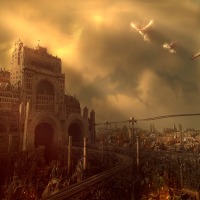
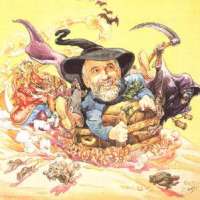



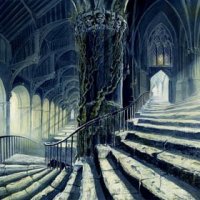

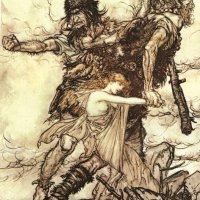
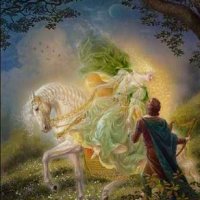





Great delineation of the types of fantasy. How would you classify something like Life of Pi?
Can you distinguish contemporary fantasy from what’s called magical realism. In my latest novel I thought I was writing magical realism but it may be better classified as contemporary fantasy. I don’t know. My knowledge of fantasy writers extends to Tolkien, Robert Jordan and Neil Gaiman. I loved Gaiman’s American
Gods.
Good point, some books really are one of a kind!
Love this! The topic is something I think about a lot, actually, and to see it written out like this helps put my brain in order. I read so many books that fall under the general category of “fantasy”, and it’s hard to describe to others what type of books they actually are without making it seem like I’m reading The Wheel of Time over and over – although that happens too!
I LOVE fantasy in all its myriad forms…wouldn’t the world be duller without it? 😀
I enjoyed reading your blog. It was very well written and provided interesting information.
I loved your blog. It’s definitely well written and even helped me to understand my own writings. Thanks for sharing!
Enjoyed the post!
I have to confess a preference for High/Epic fantasy (although not of the type, as you put it “that runs out of ideas long before it runs out of pages” 🙂 )
Low fantasy on the otherhand, has never really appealed. It’s probably because I read a lot more than fantasy, including a lot of history. There, I get plenty of grittiness, disease, flawed characters, disappointment, and horrible acts. I don’t need to read fantasy for more of that; I’ve always turned to fantasy for something better. There was plenty of darkness in LOTR but in the end, the heroes were noble and their quests succesful.
Put another way, fantasy worlds are something I’d like to day-dream about. I recall picking up a featured book the other day in the store: in the first few pages, the main character is watching his men cut fingers off dead villagers to take their rings while he blames them for not paying the tribute that would have prevented that. Such behavior was all too common in the hundred years war and similar periods. I’m quite familiar with it already and don’t need that in my fantasy worlds 🙂
As always, great information laid out nicely. Well done